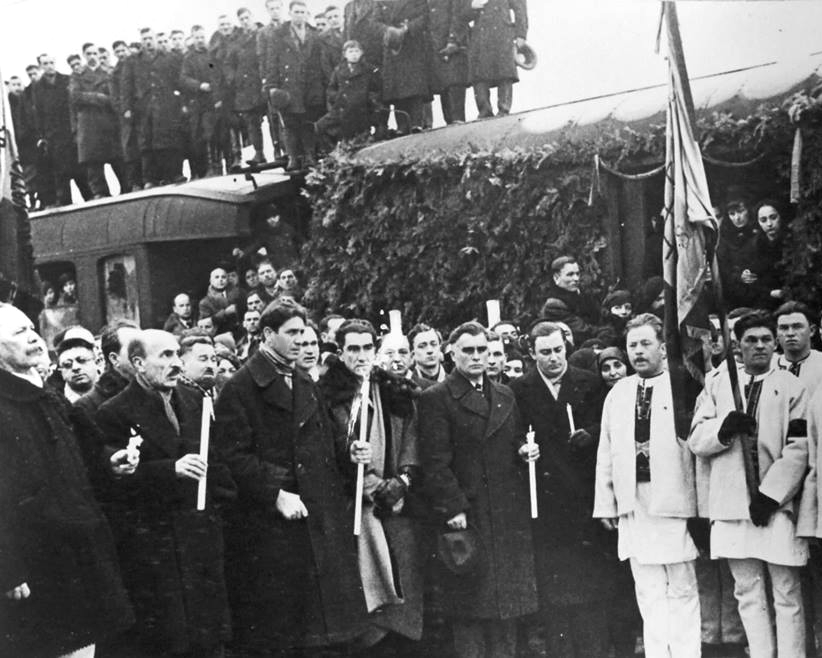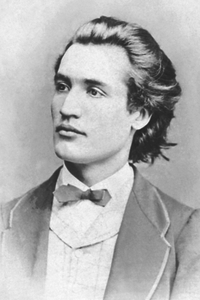Eminescu and the Heraclitean Cycle
Since the age of Goethe,
with its cabalistic influences stemming back to the Italian Renaissance,
Western philosophy, literature, and science have mistaken the Heraclitean
primacy of becoming — rather than being, in the Platonic sense — as some kind
of chthonic worldview. Usually the concept of becoming and has-become is
portrayed as organic. In the 20th century, Oswald Spengler summarized this
Goethean orientation, while Julius Evola attacked it, but neither challenged
the assumption itself.
Heraclitus was actually
the most radically celestial of all the Classics. His concept of fire-as-logos
refers to astral fire, and not, as has been assumed time and time again, to
earth-bound fire. Evidently his aim was to restore the primeval Indo-European
fire-worship, which he believed had been lost in Greek literature and
philosophy.
In the Heraclitean cycle,
fire is the primordial first element.
The death of fire is air, which indicates that Heraclitus had celestial
fire in mind. The death of fire is
water, and the death of water is earth.
The earth will die by fire, which will usher in a new cosmic cycle.
“La steaua” is one
of Eminescu’s most concise and original poems. It reorients the entire Heraclitean vision of European
Romanticism back to a celestial, rather than chthonic, view of life. The idea of becoming is re-masculinized—that is, reoriented toward the heavens.
Rather than the clichéd feminine and organic symbol of most Romantic
poetry, life is pictured in “La Steaua” as the death of celestial fire. The original intent of Heraclitus is
restored. Quite an achievement,
for only four short stanzas.
UNTO THE STAR
Translated by Adrian G. Sahlean
'Tis such a long way to the star
Rising above our shore
It took its light to come so far
Thousands of years and more.
It may have long died on its way
Into the distant blue
And only now appears its ray
To shine for us as true.
We see its icon slowly rise
And climb the canopy;
It lived when still unknown to
eyes,
We see what ceased to be.
And so it is when yearning love
Dies into depth of night:
Extinct its flame, still glows
above
And haunts us with its light.
TO THE STAR
Translated by Corneliu M. Popescu
So far it is athwart the blue
To where yon star appears,
That for its light to reach our
view
Has needed thousand years.
Maybe that ages gone it shed
Its glow, then languished in the
skies,
Yet only now its rays have sped
Their journey to our eyes.
The icon of the star that died
Slowly the vault ascended;
Time was ere it could first be
spied,
We see now what is ended.
So is it when our love's aspire
Is hid beneath night's bowl,
The gleam of its extinguished fire
Enkindles yet our soul.
TO THE STAR
(Uncredited Translation)
The radiance from that new-born
star
Will take many thousands of years
To travel a path that comes so far
To finally reach our eyes.
Perhaps it died while on its way
Through infinite blue space,
Yet only now does its light stray
To shine upon your face.
Slowly climbing the dark skies
Is the dead star's icon:
Invisible when it did exist,
Today, we see an illusion.
And so it is when passion's fled
Lost in the depths of night,
The light of our love, now dead,
Still haunts us in its flight.
TO THE STAR
(Another Uncredited Translation)
Look, that star that's shining
up there, so far away;
Her light has traveled eons
to meet our eye today.
Perhaps she even perished
a long, long time ago;
only her light but now
did cross the way we go.
The icon of this now dead star
slow in the sky it rises.
She was, while we could not her
see.
Now that we see, she's vanished.
So, just alike, when feelings
faded,
prey to the grinding wheels of
time,
the spectre of our weathered love
is doomed to haunt us for a while.





Comments
Post a Comment